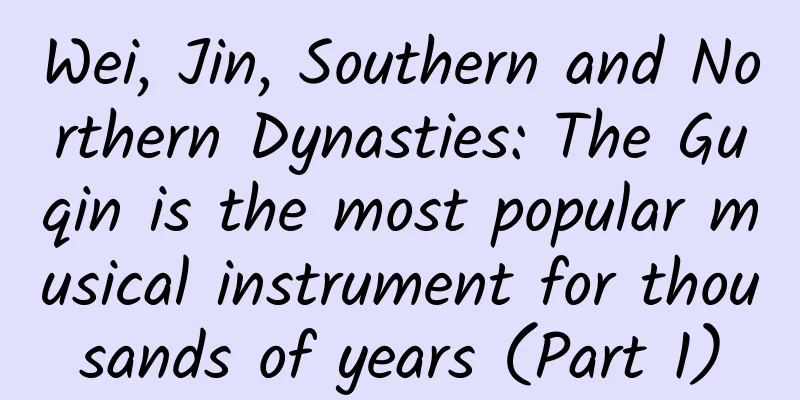What is Chaoshan? Fresh and lively!

|
This is a place your tongue knows better than your brain Beef hot pot, raw marinated, Gongfu tea … Before the geographical concept of "Chaoshan" was known to people (Collection of Chaoshan cuisine, drawn by @阿土/星球研究院, photographers @小强先森&张向良&刘艳辉&大叔&丁俊豪&李艺爽&方文奇) ▼ However, after satisfying the "appetite" How much do you know about Chaoshan? At the southern tip of China, the easternmost part of Guangdong Chaozhou, Shantou and Jieyang It constitutes what people usually call "Chaoshan" A group of low-key wealthy businessmen came out of here The myth of wealth transcends time and continues to this day (List of some Chaoshan-born wealthy people, drawn by @阿土/星球研究院, picture source @视觉中国&wikimedia commons) ▼ The wanderers from here recreate a "Chaozhou" overseas 13 million overseas hipsters, 2 million hipsters from Hong Kong, Macau and Taiwan Across time and space, tenaciously preserving cultural traditions A lasting resonance with the homeland (Malaysia, the Johor Ancient Temple Centennial Parade hosted by Teochew people, photographer @Malaysia Huang Xiuxiang) ▼ When we lament that thousands of cities look the same I found that Chaoshan people don’t seem to care about what the outside world thinks. Worship gods, ancestors and speak Chao dialect Drinking tea, watching plays, weddings and funerals, all in their own way (Jieyang Qiaolin Fireworks Dragon, commonly known as "burning dragon", photographer @丁俊豪) ▼ Located in the corner of mountains and sea People in a foreign country Thinking of the Ancestors Fresh and unique Why is Chaoshan so special? 01 Own world You can hardly see Chaoshan in history books China's political center has long been located in the north Chaoshan is far away from the emperor, and the vast ocean is to the south Therefore, the struggle for supremacy has nothing to do with it, and the change of dynasties is too far away for it. And the next level Chaoshan is equally remote compared to the provincial capital Guangzhou. Guangdong is unique among the southeastern coastal provinces in that it is long and narrow. Chaoshan is the easternmost part of Guangdong More than 400 kilometers away from Guangzhou Approximately equivalent to Beijing to Hohhot (Sketch of the location and topography of Chaoshan area, drawn by @Gao Liqian/Planet Research Institute) ▼ What makes this distance seem even more remote is the Lotus Mountain Range. It starts from the mountainous area in eastern Guangdong in the north Cutting diagonally to the southwest, extending to the coast Create mountains over 1,000 meters high This long and tall diagonal line Become a barrier separating Chaoshan and the Pearl River Delta The closed geographical pattern of Chaoshan (Please watch in horizontal screen, Tongguzhang of Lianhua Mountain Range, photographer @陈泽鑫) ▼ The End of the End The Edge of the Edge Under the overlap of double edges Chaoshan has its own world Between the Mountains Hanjiang River, Rongjiang River, Lianjiang River The three rivers each created an alluvial plain Collectively known as the "Chaoshan Plain" Leave room for the birth of civilization here (Please view Hanjiang River in horizontal mode, the largest river in Chaoshan, photographer @林文强) ▼ The Tropic of Cancer passes through Chaoshan More than half of the area is south of the Tropic of Cancer Rain and heat occur at the same time, with sufficient heat The monsoon brings abundant rainfall to the southeast of the Lotus Mountains thus Chaoshan's background color is highly saturated There is greenery all year round here The trees are green and moist all year round. (Shantou Nan'ao Forest Park, photographer @白成哲) ▼ Clear sea blue Long and winding coastline The tides circulate here (Coast of Nan'ao Island, Shantou, photographer @赵高翔) ▼ Extreme orange red Popular flowers and trees for trendy people When the flowers bloom, they will never restrain Kapok , huge and deep red (Kapok flowers by the Han River in Chaozhou, photographer @张向良) ▼ Firecracker flower, a patch of orange and yellow (Firecracker flower, photographer @杨虎) ▼ Against the colorful background, everything is alive and kicking Marine life swims freely in the vast ocean (Chaozhou marine fish, image source: Visual China) ▼ In ancient China, the southeastern coast was a late starter Chaoshan is located at the provincial border, especially at the edge. Aboriginal people may be singing in the mountains Women wearing brightly embroidered clothing Or start making boats and make a living by fishing (The She ethnic group in Fenghuang Mountain, Chaozhou, is the indigenous inhabitant of Chaoshan. The She ethnic group does not have its own writing system, but is good at weaving and embroidery. The picture shows the restored Chaozhou She ethnic group Phoenix costume, picture source @香聚粤修研究院) ▼ The imperial court occasionally cast a glance at Chaoshan, but only briefly. In 591 AD, Emperor Wen of the Sui Dynasty named this place "Chaozhou" after the "reciprocating tides". The name "Chaozhou" has a history of more than one thousand years. For a long time, " Chaozhou " has always been This is what we now call the Chaoshan area. But naming is just naming. Chaozhou is still considered a barbarian land in the eyes of the Central Plains. The poet Han Yu more than 200 years later When I knew I was going to be exiled to Chaozhou, I was determined to die. (In 819 AD, Han Yu was demoted to Chaozhou for speaking out and admonishing others. On the way, he wrote "Left to Languan to Show My Nephew Sun Xiang") ▼ A letter was submitted to the emperor in the morning, and he was demoted to Chaoyang, a distance of eight thousand miles away, in the evening. If you want to eliminate the evils for the wise emperor, you are willing to cherish your remaining years! Where is my home when clouds cross the Qinling Mountains? My horse cannot move forward when snow blocks the Lan Pass. I know you have come from afar with a purpose, so please collect my bones from the poisonous river. Arriving in Chaozhou Han Yu may have enjoyed the earliest raw pickled He saw a table full of strange-shaped, half-cooked seafood. I just felt the stench and was sweating profusely. (Chaozhou pickled crab, photographer @丁俊豪) ▼ At that time, crocodiles were rampant in the river Han Yu led his men to throw pigs and sheep into the river Write "Crocodile Article" to persuade crocodiles to leave (Excerpt from Han Yu's "Crocodile Essay", the Chinese Han Yu Crocodile Art Restoration Map was authorized by Liu Jun of Hefei University of Technology, and the map was made by @阿土/Planet Research Institute) ▼ In just eight months in Chaozhou Although Han Yu failed to bring about fundamental changes But he established state schools, liberated slaves, and encouraged people to farm and sericulture. The image of a diligent and tolerant scholar The Central Plains civilization left an excellent impression on Chaozhou (In order to commemorate Han Yu, Chaozhou people renamed the mother river Hanjiang, renamed the mountain Han Yu climbed Hanshan, and established the Han Wengong Temple. Photographer @丁俊豪) ▼ This is the prelude of Central Plains music played in Chaozhou But this remote and colorful seaside land Still waiting for someone to actually settle here 02 Rebuilding the World Wars in the Central Plains led to the migration of the Han people to the south To avoid the war in the north, they moved further south. From Central Plains to Jiangnan, from Jiangnan to Fujian Because the land is narrow and the population is dense, we have to cross the river again and again. Fujian immigrants eventually settled in Chaoshan (Sketch of the migration of Han people from the Central Plains to Chaoshan. "Chaozhou" in the picture refers to the present Chaoshan area. Map by @Gao Liqian/Planet Research Institute) ▼ The Civilization Process of Chaozhou The Song Dynasty as a watershed The development came quickly, completely and comprehensively. It almost completely shapes the appearance of this place. Similar to most areas of civilization Dam construction, plain reclamation, post road construction (Tea terraces in Fenghuang Mountain, Chaozhou, photographer @林文强) ▼ Industry boom Adapting to local conditions, Chaozhou people boiled seawater for salt The scene of "morning smoke from thousands of stoves boiling white snow" appeared along the coast (Taiwan Tainan Jingzijiao Tile Pan Salt Field, for illustration only, image source @Visual China) ▼ Business boom Merchant ships are loaded with ceramics from Bijia Mountain on the east bank of the Han River Bijia Mountain is rich in kaolin, the raw material for ceramics. As a result, there are many kiln factories at the foot of the mountain, which is known as the " Village of 100 Kilns ". Millions of porcelains are produced each year and exported to Japan and Southeast Asia. (The picture shows a partial view of the Y10 kiln at the Bijiashan Chaozhou Kiln Site. The dragon kiln is nearly 94 meters long. Photographer: @Xuanduguan) ▼ The beautiful Chaozhou city was built on the banks of the Han River This is the political, economic and cultural center of Chaoshan for thousands of years. (The important landscape axis of Chaozhou Ancient City, "One Bridge, One Building, One Street", namely Guangji Bridge-Guangji Building-Paifang Street, photographer @张向良) ▼ Guangji Bridge built over Han River From Song Dynasty to Ming Dynasty, it has been continuously improved People built beautiful pavilions on the bridge. Merchant ships travel under the bridge, connecting the river and the sea via the Han River (Guangji Bridge is a spiritual landmark for trendy people at home and abroad, photographer @洪杰生) ▼ The spirit of learning is particularly strong Students passed through the Jinxian Gate and entered the Imperial Palace. Studying hard day and night for fame (The Jieyang Xuegong is located in the ancient city of Jieyang. It is the largest and best-preserved Confucian temple in Lingnan. Photographer: @余尧) ▼ Students are admitted They can be ranked among the nobles, and the best among them You can also erect a memorial archway on the main street of the city. The 1.6-kilometer-long Fucheng Street had 43 memorial archways at its peak. On average, there is a memorial arch every 35 meters. (Chaozhou Ancient City Archway Street, photographer @丁俊豪) ▼ People live in clans The building is closed to the outside and open to the inside The clans form a group of buildings and hug each other, gaining a sense of security in such a space (Residential complex in Guiyu Town, Chaoyang District, Shantou, photographer @陈冲) ▼ When immigrants from afar After transforming this wild place into a livable land Deep in my heart, memories of my homeland and migration are evoked The further away from home, the more I miss my hometown. The more you travel, the more you realize the value of family power Ancestors of Chaoshan people In this new home Start a grand and lasting nostalgia for ancestors Immigrants who settled in Chaoshan since the Song Dynasty Most of them came from Fujian, and they were the ethnic group that settled down after the Central Plains immigrants moved south. The Fujian immigrants wrote on the door plaque : "Yingchuan Branch" (Chen surname, originated from present-day Henan) "Lanling nobles" (Xiao surname, originated from present-day Shandong) "Xihe Branch" (Lin surname, originated from present-day Henan) Show that they are not natives, but a family from the Central Plains (Door plaque in Quanzhou, Fujian. The Lin surname originated from the ancient Xihe River (now in Junxian and Huaxian counties of Henan Province), and was called the "Xihe Branch". Image source: @Quanzhou Image) ▼ When they immigrated to Chaoshan The couplets in the ancestral hall would have words like "Putian family reputation is far-reaching, Longxi family tradition is long-lasting" Tracing the family's history from the Central Plains to Fujian The saying "Chaoshan people are the ancestors of Fujian" Still passed down from generation to generation (Chaoshan Ancestral Hall, photographer @何柯斌) ▼ Immigrants proudly preserve their own language Ancient Chinese from the Central Plains is layered on top of the Chaoshan dialect Chaoshan dialect is therefore called the " living fossil of ancient Chinese" The etiquette of life is also quite ancient When boys and girls are fifteen years old Wear red clothes and red clogs Farewell to the guardian deity at the foot of the bed - the god of parents-in-law Remove the hair on your face Symbolizes growing up (The face-pulling custom in the Chaoshan coming-of-age ceremony, also known as "opening the face", is shown in the picture by the face-pulling woman, photographer @沈绵钺) ▼ The Chaoshan ethnic group was born in turmoil and migration Perhaps because he has seen through the changes of dynasties and the uncertainties of the times They believe more in the power of family and inner faith. The passionate and heroic Yingge dance Often takes the lead in the procession The movements are wide and open, and the lead dancer holds a little dragon in his hand. Or it may be derived from the remains of the Nuo culture of the pre-Qin period. The worship of snakes in the ancient Minyue culture (Ying Gewu, photographer @城市穿越客) ▼ Mazu, the sea goddess from Putian, Fujian It has become the spiritual sustenance of Chaoshan people when they go out to sea Respected as "Queen of Heaven" and "Concubine of Heaven" (Mazu procession in Xilu Town, Shantou, photographer @潮珊阿龍) ▼ Local belief in the " Three Mountain Kings " It comes from the legend of three mountains taking on human form. Or it may have originated from the worship of mountain gods before the Central Plains people entered (The so-called "Three Mountains" refers to the three high mountains to the west of Hepo Market in Lintian Town, Jieyang County, Chaozhou Prefecture (now Hepo Town, Jiexi County), named Mingshan, Jinshan and Dushan. The Three Mountain Kings are widely worshipped in Chaoshan and are in charge of life and death in Chaoshan. Photographer @沈绵钺) ▼ The divine world is a reflection of the human world Gods from different periods and regions coexist harmoniously in Chaoshan Create a colorful world of gods that is highly integrated with the secular world (Please view some of the Chaoshan gods in landscape mode, drawn by @阿土/星球研究院) ▼ They each have their own duties and come from different time and space A sky full of gods and ancestors Reflecting the bustling world of Chaoshan (Night view of Chaozhou Ancient City, photographer @张向良) ▼ Wang Shixing, a geographer in the Ming Dynasty, sighed after visiting this place: Chaozhou is so prosperous now, but it is different from the past (Wang Shixing, "Guangzhi Yi, Volume 4, The Provinces in the South") ▼ "Today's tide is different from the past. The streets are prosperous, the men and women are prosperous, and the clothes, horses, and music are no less than those of the upper countries." But under the blooming flowers The troubles of the prosperous times are showing their claws 03 Survival in the Sea Ming Dynasty The maritime ban policy was implemented during the Ming and Qing dynasties and lasted for hundreds of years. Directly hit the livelihoods of the people along the Chaoshan coast Compared with the closed isolation from the Central Plains inland Chaoshan opens itself to the sea It is located at the intersection of the east-west route Directly east to Japan and North Korea To the west, you can sail to the South Seas A large number of people make their living from the sea (Distribution of Chaozhou's foreign trade ports in the Ming Dynasty, drawn by @Gao Liqian/Planet Research Institute) ▼ Land bans cannot stop the ocean's waves Chaoshan, which is used to finding its own way out, is even more unwilling to accept its fate. Moreover, the stricter the maritime ban , the higher the profits. (Longqing, Chaoyang County Chronicles, Volume 2, County Affairs Records) ▼ "The people of Chaozhou openly built large ships and traveled through various tribes. Set sail, return with a full load, with treasures overflowing the streets" Therefore, in different groups and at different stages Chaoshan people interact closely and intensely with the ocean A thrilling legend of suffering and wealth There are thieves who go to sea to make a living Japanese pirates attacked the southeast coast during the Ming Dynasty Chaozhou Prefecture is the eastern gate of Guangdong and was deeply affected. The maritime ban policy caused some low-income people in coastal areas to lose their livelihoods. Some refugees went to sea to become pirates, or colluded with Japanese pirates, or joined forces with mountain bandits. Chaozhou Prefecture became Guangdong's "den of thieves" Nan'ao Island is only 10 kilometers away from the Chaoshan coast. It is located at the strategic point of Fujian and Guangdong, and is an important node for coastal shipping. The geographical location is extremely important, isolated overseas It has become a pirate's paradise and a smuggler's paradise. (Please view Nan'ao Island in horizontal mode. Nan'ao Island was an important port for East Asian international trade in the Ming Dynasty. It appeared in the records of Portuguese merchants under the name "Lamao". Photographer: @余尧) ▼ There are profit-seeking sea merchants The official market is closed, but the private market continues The maritime ban policy was sometimes loose and sometimes strict Businessmen find gaps in the rules Occasionally, armed confrontations occurred with the government Zhanglin Port, located at the confluence of the Han River and the sea, is rising At its peak, it had more than 100 ocean-going fleets. The red, white, green and blue boats of each province complement each other The red-headed boat representing Guangdong is particularly eye-catching. The Chaozhou business community thus entered the historical stage and spread across the north and south. (During the Qianlong and Jiaqing periods of the Qing Dynasty, Zhanglin Port entered its heyday. "The Prosperity of Zhanglin in the Qing Dynasty" (partial) by Wu Huaping, a retired teacher at Subei Middle School in Chenghai District, Shantou City, and drawn by @Atu/Planetary Research Institute) ▼ There are oppressed civilians The looting of Japanese pirates along the coast The people were forced to build forts for self-defense and live in clans. Large and small "village" appeared in Chaoshan villages So-called "Every village has its own stronghold, with high walls and thick fences, everywhere." (Daoyunlou in Raoping, Chaozhou, is a representative of Chaoshan Tulou and the largest castle-style octagonal Tulou in China. Photographer: Chen Chong) ▼ Civilians can be forced to become bandits Pirates can make money doing business Merchants are armed with pirates Three identities are unclear and constantly changing. Stirring up the Chaoshan coast (The full name of Nan'ao General Military Mansion is "Fujian-Guangdong Nan'ao General Military Mansion". It is the only general military mansion on an island in the country and a historical witness to the Chaoshan coastal defense in the Ming and Qing Dynasties. Photographer @丁俊豪) ▼ In the late Qing Dynasty The long-standing practice of building strongholds for self-protection has put local governance in a difficult position There are constant conflicts between clans, and Chaozhou is known as the "hometown of armed fights" People at that time commented that "Chaozhou customs are the worst among Cantonese people" In 1812, the population of Chaozhou Prefecture was 2.21 million Nearly four times as much as a century and a half ago The population boom has exposed long-standing constraints on the land: There is too little arable land No land to cultivate, no work to do Natural disasters, man-made disasters, the law of the jungle There was no other choice but to go to Siam (now Thailand) More lower-class Chaoshan people are pushed further into the ocean The Chaoshan people began to "go abroad" and this was known as " going to Southeast Asia" (The three-piece set is said to be a market basket, a bath towel, and a sweet cake. Map by @阿土/星球研究院, image source @颐陶轩潮舟窑博物馆) ▼ Southeast Asia and America, which are developing at the moment, need labor A large number of Chaoshan people were sold overseas as "piglets" Or they are forced to take the initiative to make a living Or being seduced, blackmailed, kidnapped Set foot on foreign land (Chinese workers building railroads in America in 1877, map by @阿土/Planetary Research Institute, image source @wikimedia commons) ▼ Population and land Refugees and the Rich Crisis and Turnaround Under many contradictions Chaoshan and the ocean form a strong tension Stimulating the clan ties of huddling together for warmth under the ban It also made the people of this land determined to cross the ocean (People living on the sea along the Chaoshan coast, photographer @丁俊豪) ▼ The ocean makes this small world unstable Chaoshan is undergoing tremendous changes, and the people of Chaoshan are working hard A bigger "Chaoshan" But it will be formed through the ocean 04 Hometown and Foreign Land China was isolated from the outside world for a century Still can't lock the huge waves from the sea In 1856, the British and French forces launched the Second Opium War The Qing government was defeated and signed an unequal treaty Chaozhou (Shantou), Qiongzhou, Taiwan 10 places became foreign trade ports Shantou , a land of sand ridges Located at the mouth of Hanjiang River, Rongjiang River and Lianjiang River It replaced the increasingly silted Zhanglin Port It also took on the mission of being the economic center of Chaozhou City. Chaoshan Finally embrace the ocean completely (Relative positions of Chaozhou and Shantou, map by @Gao Liqian/Planet Research Institute) ▼ On January 1, 1860 , Shantou opened its trade with the United States as scheduled The "Chao Customs" was established on Mayu Island in Shantou Port At this point, Shantou was officially opened as a port (The radial road network of Shantou’s old city was formed after the port was opened. Photographer @HatterWei) ▼ 1906 Chaoshan Railway completed and opened to traffic Connecting the trading port of Shantou and Chaozhou This is China's first commercial railway The name "Chaoshan" is accompanied by 42 kilometers of railway Since then, it has been widely used among the people The century-old commercial port was once glorious (Shantou Small Park, Photographer @李艺爽) ▼ 1933 Shantou Port’s cargo throughput accounts for 8.76% of the country’s coastal ports’ cargo throughput It ranks third in the country after Shanghai and Guangzhou. Become an international seaport on China's southeast coast Merchant ships travel between Shantou, Hong Kong, Thailand and Singapore The international trade circle of Shantou, Hong Kong, Siam and Rattan is woven together The Chaozhou business community The Chaozhou business community was built on geographical and blood ties A well-connected and strong network Rapidly build a trade network Even though the British have significant political and capital advantages in Hong Kong Can't intervene (In the early days, Teochew merchants sold local specialties from the north and south in Hong Kong, and were called "North-South Merchants". The picture shows Bonham Strand West where the North-South Merchants gathered. Photographer: He Qianjun) ▼ The wealth that Chaoshan merchants quickly accumulated abroad Externalized into the exquisite residential buildings, ancestral halls and temples in my hometown Chen Cihong (hóng), a leader among the northern and southern merchants The business is spread all over Southeast Asia, and the wealth is in Southeast Asia Chaoshan proverb: "No one is richer than a benefactor" The construction of Chen Cihong's former residence took nearly half a century Covering an area of 25,400 square meters, with 506 rooms Exquisite and gorgeous, blending Chinese and Western styles Known as "the first overseas Chinese residence in Lingnan" (Former Residence of Chen Cihong, Photographer @阿誠的白日梦) ▼ As if there is only the ultimate luxury and magnificence Only then can we soothe the hardships of surviving in the raging sea Overseas Chinese tycoons return home in glory Building a house often costs money Even invited two groups of craftsmen to "compete in art" Therefore, the craftsmen also "involve" to the extreme Wood carving needs multiple levels of hollowing out Intricately carved gold (The gilded wood carvings at the Huanggong Temple in Jilue, Chaozhou, are the epitome of Chaozhou wood carvings. Photographer: @阿誠的白日梦) ▼ Stone carving should be exquisite Lifelike (The stone carvings in Chaozhou Congxi Temple show "scholars, farmers, merchants and artisans", photographer @杨虎) ▼ The roof should also be full of flowers Competition of beauty (Please watch in horizontal mode. Inlaid porcelain is made of cut porcelain pieces and is a characteristic architectural decoration in the Chaoshan area of southern Fujian. Photographer: @万诱引力) ▼ Chaoshan architecture is a review of Chaozhou craftsmen The Chaozhou craftsmen The products of mountains and seas, opera art, and Nanyang customs Integrated into Chaoshan architecture Reach the pinnacle, the ultimate in excellence Delivering a fashionable and extremely complex aesthetic answer (The roof of the Chaozhou Qinglong Ancient Temple, with inlaid porcelain showing scenes from traditional Chinese opera stories, photographer @阿誠的白日梦) ▼ Chaoshan people call people who go to Southeast Asia to make a living "Fanke" For most ordinary customers Maybe you can't afford to spend a fortune on a mansion. But no matter what, I have to send money in the letter I send home. This is the "Qiaopi" 1934 was the peak period of the development of the overseas Chinese remittance industry On average, more than 180,000 overseas Chinese letters are sent back from Southeast Asia every month. Villages in Chaoshan that rely on overseas Chinese remittances for survival Countless families are eagerly waiting for this The " pijiao " that specializes in delivering overseas remittances brings peace and money (Qiaopi, map by @Atu/Planet Research Institute, photographer @Zou Xiaodong) ▼ While giving back to their hometown, Chaozhou overseas Chinese also build up Chaozhou society overseas. They went into business and politics and became overseas Chinese leaders. Taking root in Southeast Asia The Teochew Associations have formed a huge network of overseas Teochew people (Han Jiang Family Temple in Penang, Malaysia (Penang Teochew Association), photographer @阿誠的白日梦) ▼ Standing at the Shantou Port at that time You may see The young man is about to cross the border with his bag The foreign tourists got off the ship and returned home in glory The postman was preparing to deliver the overseas remittances from Nanyang Busy air routes Emerging cities The bustling pier A bigger " Chaoshan " is finally formed 05 Looking Back Chaoshan Civilized by immigration in turmoil It was also formed by the wanderers who traveled far away from home. Chaoshan has experienced a long period of wilderness No one cares, it grows freely Chaoshan was once at the forefront of reform Standing at the forefront, full of joy (In 1980, Shantou became a special economic zone. The picture shows the Shantou city and the Luoshi Bridge. Photographer: @王佩) ▼ But the historical stage has its own generals and ministers. Prosperity is often like a passing cloud Besides, people are always on the move. Since 1991 Shantou, Jieyang, Chaozhou The three cities have been "separated" for more than 30 years Chaoshan people A new round of departure has already begun The small land still cannot accommodate more people Facing the increasingly powerful economic siphoning of the Pearl River Delta The Chaoshan people are not immune either. (A new generation of Chaoshan people went to the Pearl River Delta to work hard. The picture shows the high-speed rail passing through Chaoshan houses. Photographer @卢明浪) ▼ Eternal change is not centered What is Chaoshan? It is the vigorous vitality to stand out and make a fortune. There should also be celebrations with loud gongs and drums, and thanksgiving to the gods. (Centipede Dance at Ximen, Chenghai, Shantou, has been passed down for a hundred years, photographer @城市穿梭客) ▼ It is a cultural tradition that is stubbornly adhered to. Chaoshan women remember the rules of the eight festivals of the year Busy all day, year after year (The Pearl Lady is traveling in a lotus carriage in Qingshan Village, Xilu Town, Shantou. People move tables and take seats to prepare to worship the Pearl Lady. Photographer: @城市穿梭客) ▼ Leave your hometown but never forget your way home, go through hardships but never forget your ancestors The more I leave, the more I look back Travel across mountains and rivers to take root, and travel across oceans to live a colorful life The harder it is, the more brilliant it will be (The God of War jumping over the fire in Hengshan Village, Jiedong District, Jieyang City, photographer @潮珊阿龍) ▼ No matter where you are Chaoshan people have the same Chaoshan All things have spirits, and gods and ghosts are unpredictable Gods all over the sky, ancestors' blessing Chaoshan, a corner of mountains and sea Crossing mountains and seas, achieving Chaoshan So fresh and alive So unique (Lobster dance during the Ximen Parade in Chenghai, Shantou, photographer @城市穿梭客) ▼ This article was created by Written by : Yue Fan Image : Zhang Zhaohai & Qin Nan Design : A Tu Map : Gao Liqian Reviewer : Xia Ya & Zhou Tianxiu & Zheng Yi Cover Photographer: Fu Haiyan Audit Expert Huang Xiaojian, Director of the China Overseas Chinese Culture (Chaoshan) Research Center Chen Ye, lecturer at South China Normal University Special thanks to: Lin Lunlun, deputy director of Chaozhou Culture Research Institute of Jinan University Liu Jun, professor at Hefei University of Technology Chaoshan dialect audio provided by: Lin Chaohong, professor of Chaozhou Normal Branch of Hanshan Normal University and national Mandarin proficiency tester 【References】 [1] Huang Ting. A Brief History of China and Chaoshan in the Ocean. Beijing: Sanlian Bookstore, 2017, 09 [2] Li Jiancheng. Chaoshan Rural Geography. Guangzhou: Jinan University Press, 2016, 01 [3] Ge Jianxiong. History of Chinese Immigration, Volume 2. Fuzhou: Fujian People's Publishing House, 1997, 07 [4] Xie Chongguang. Population and cultural output from southern Fujian to Chaoshan and the Hokkienization of Chaoshan[C]//World (Macau) Minnan Cultural Exchange Association. Collection of papers on the contemporaneity and worldliness of Minnan culture. Straits Literature and Art Publishing House, 2014: 192-200. [5] Chen Xianwu, ed. Chaozhou Panorama: Archway Street. Beijing: Writers Publishing House, 2015. [6] Chen Haizhong. From the interests of the people to national power: On the Chaoshan Railway Disturbance of 1904-1909[J]. Pacific Journal, 2008(10):85-94. |
Recommend
Great Wall plans to invest US$500 million to build a factory in Mexico
According to a recent report from the UK, Great W...
Dushan County, Guizhou is in debt of 40 billion! What exactly happened? How was it used? Detailed reasons revealed!
The first impression of Guizhou is that it is rel...
Does the Earth need to wander? Have you ever seen a space elevator? Here's everything you want to know about "The Wandering Earth 2"
Is the Digital Life Project feasible? What is a r...
How to increase the popularity of Kuaishou live broadcast, increase the popularity of Kuaishou live broadcast by 1,000 people!
Professional Douyin and Kuaishou likes-boosting p...
Behind-the-scenes heroes: Today’s subtitle groups
If you are a fan of American dramas or Japanese a...
Urgent @Parents: Information security alarm has been sounded, please accept the protection strategy! | Digital Literacy
Review expert: Liu Xiangquan, Director of the Rob...
Juyi Thinking's most profitable project on Douyin in 2021, Oral Broadcast Number 1.0
【Juyi Thinking】The most profitable project of Dou...
How to solve the low conversion rate? Here are 5 tips!
The operational goal of our service account is to...
How to find your first operations job with no experience?
How to find an operations job without Internet ope...
QQ Music advertising promotion style and material specifications!
QQ Music has more than 800 million registered use...
3 routines for short video scripts, novices can also make hot products
Do you think watching short videos is more enjoya...
The best car is still there. The global electric vehicle sales ranking for October is released, and Wuling Hongguang MINI EV ranks second
As the pioneer and leader of electric vehicles, T...
Beware! A pen contains ten kinds of poisons. Your children may also be using it...
This article was reviewed by Chu Yuhao, PhD from ...
The heat wave in the south has cooked all the eggs on the ground, but why does the weather forecast tell me that it will be 37℃ today?
Recently, friends in the north have fully felt th...
B station promotion and fan-attracting skills
In summer, I believe it is not uncommon for every...









